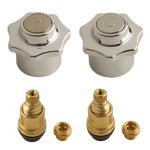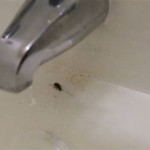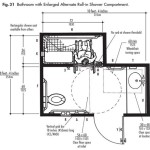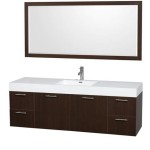Tiny Bugs In Bathroom Sink: Causes and Elimination Strategies
Discovering tiny bugs in your bathroom sink can be an unsettling experience. These unwelcome guests can range from annoying to potentially hazardous. Identifying the type of bug and understanding the underlying causes are crucial for effective elimination.
Identifying Common Sink Bugs
Tiny black flying insects near the drain are usually drain flies. Their larvae thrive in organic matter found in drains and pipes. Fungus gnats are another common type, with long legs and dark bodies. They may appear near plants or moist areas. Springtails are wingless insects that jump around when disturbed. They thrive in humid environments and can be found near showers or toilets.
Causes of Sink Infestations
The presence of tiny bugs in the bathroom sink often indicates an underlying problem. Common causes include:
- Clogged drains: Organic matter collects in drains, creating a breeding ground for drain flies and gnats.
- Slow leaks: Even minor leaks can provide moisture for springtails and other insects.
- Overwatering plants: Excessive watering can attract fungus gnats to the soil near bathroom plants.
- Poor ventilation: Humidity levels in bathrooms can increase, attracting springtails and other insects that thrive in moisture.
Elimination Strategies
To eliminate tiny bugs in the bathroom sink, a comprehensive approach is necessary:
1. Clean and Unclog Drains
Regularly clean drains using a drain cleaner or baking soda and vinegar solution. Remove hair, soap scum, and other debris that attract insects.
2. Repair Leaks
Inspect pipes and fixtures for leaks. Seal any cracks or gaps with caulk or plumber's putty. Fixing leaks will eliminate moisture and deter springtails.
3. Avoid Overwatering Plants
Only water bathroom plants when the soil feels dry to the touch. Overwatering can create a breeding ground for fungus gnats.
4. Improve Ventilation
Open windows or use a bathroom fan to increase ventilation. This will reduce humidity levels and make the environment less attractive to insects.
5. Use Insecticides
If natural methods are not effective, you may need to use insecticides. Choose products specifically designed for drains or bathroom insects. Follow the instructions carefully and take precautions to avoid harmful exposure.
Prevention Tips
To prevent future infestations, consider the following tips:
- Flush drains regularly with hot water to prevent organic matter buildup.
- Install drain covers to prevent debris from entering drains.
- Keep bathroom surfaces clean and free of moisture.
- Store food in airtight containers to prevent attracting insects.
- Inspect bathroom plants regularly for signs of fungus gnats and take appropriate measures.
Conclusion
Tiny bugs in the bathroom sink can be a nuisance and a potential health hazard. By identifying the type of bug and understanding the underlying causes, you can effectively eliminate the infestation. Regular cleaning, proper maintenance, and preventive measures will help keep your bathroom bug-free and sanitary.

Identify Tiny Bugs In Bathroom And Get Rid Of Them For Good

Bathroom Bugs Identification 15 You Ll See In A

Bathroom Bugs Identification 15 You Ll See In A

Tiny Bugs In Your Bathroom Identification Control Worst Room

Bathroom Bugs Identification 15 You Ll See In A

Tiny Bugs In Your Bathroom Identification Control Worst Room

Identify Tiny Bugs In Bathroom And Get Rid Of Them For Good

Tiny Black Bugs In Bathroom No Wings What They Are And To Do School Of

What Are These Tiny Brown Crawling Bugs In My Bathroom Apartment Lease Phoenix Area Arizona Az City Data Forum

Bathroom Bugs Identification Guide How To Get Rid Of Each Type A Z Animals
See Also







